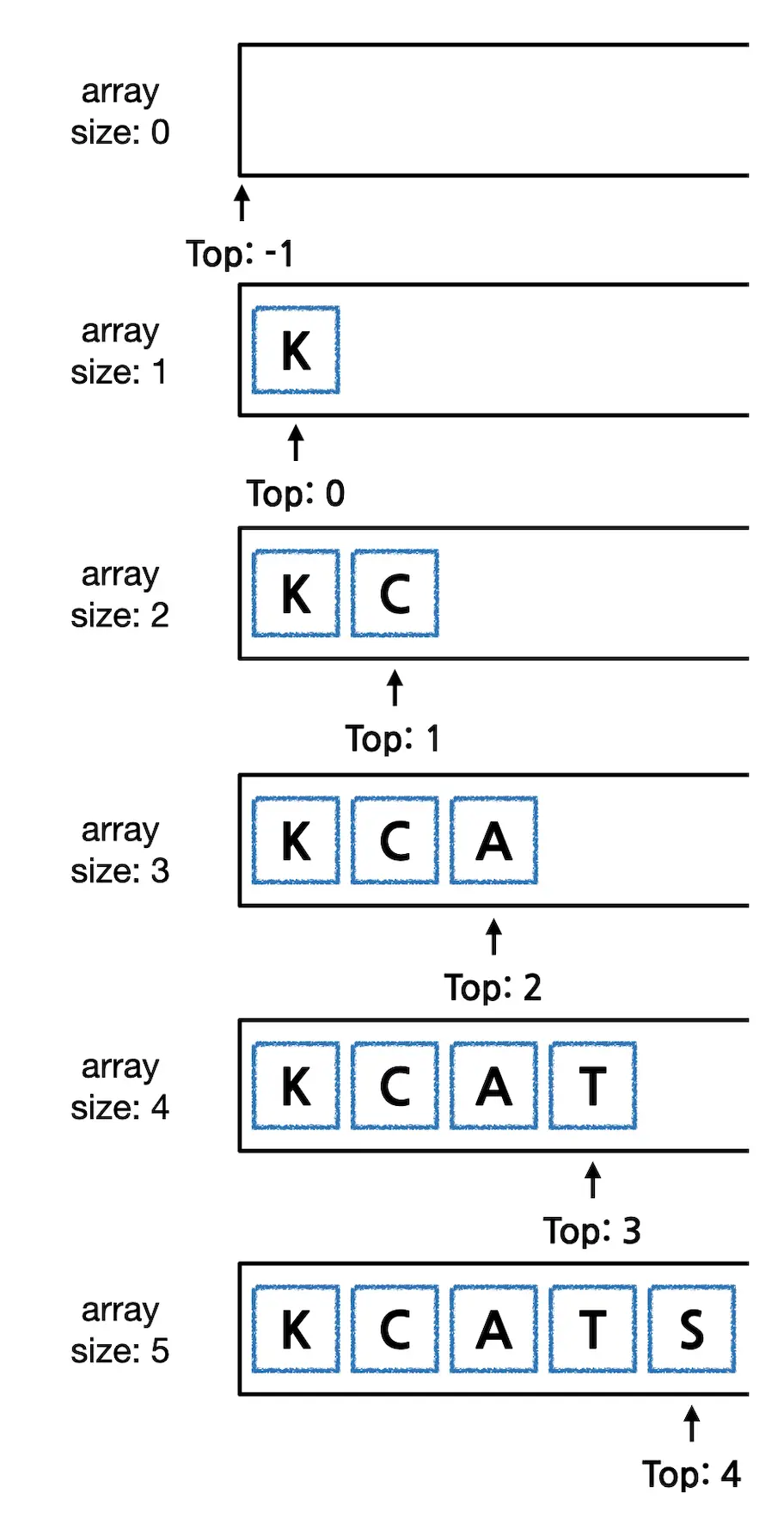[Data Structures] Let's learn about stack structure
Today, let's learn about the stack structure among data structures.
The goal of today's post is for you to understand the thumbnail of this post!
Actually, it's not that difficult. Because the stack structure is a structure that we encounter too much in our daily lives.
Think of it as a storage for clothes. Let's say you've stacked your clothes one by one and put them in the storage box, and you need to take out the clothes at the bottom.
Can I take out the clothes that I need to take out without touching other clothes on top of the clothes that I need to take out?
That's right. It's impossible, right? The bottom clothes can only be taken out after all the top clothes are taken out.
This is the stack structure. It's easy, right?
This is what we call the Last In First Out (LIFO) structure. The last one that went in comes out for the first time. If you understand so far, the theory is over.
It's convenient to think that the stack structure is to put the things we want in a basket with only one entrance and take them out sequentially from the top.
In most languages, stack, queue, etc. are already provided in an optimized state, so let's implement them in C language.
In fact, if you can properly understand and implement the data structure itself, there is no big problem with language. (No problem means performance, not language-agnostic skills.)
Now that we've understood the stack structure above, let's implement it.
2-1. Required Variables
I understand the theory, but then how should I implement it?
We need to define the variables we need first.
I made a stack in the form of a structure.
top
It's a variable that means how big the current stack is.
With the initial value set to -1, each time the array is filled with value, +1 will act as an index to indicate the last item in the array.
array
It's a space to build a stack. To borrow the above explanation, it's a storage box for clothes.
1#define ARRAY_SIZE 623typedef struct STACK {4 int top;5 char array[ARRAY_SIZE];6} Stack;
2-2. Required functions
What should I do with codes that I always use repeatedly? You have to function it!
If you make it a function, if you fix one part when a change occurs, it will be applied to all code parts that use the function, making maintenance easier and fewer mistakes, so make sure to! Please practice functioning.
int isEmpty(Stack stack)
It is a function that checks whether the stack is empty or not.
You said you'd set the initial value of the top variable to -1, so I just need to check if it's -1, right?
(There is no boolean value in the c language, so if true, 1 if false, it returns to zero.)
int size(Stack stack)
It is a function that checks how many items are in the stack.
The top variable is said to act as an index indicating the last item, so if you do +1, you can easily know the number of items.
char getTop(Stack stack)
A function that returns the last item in the stack.
void push(Stack *stack, char item)
It's a function that puts items in the stack.
Fill the array one by one, increasing the top index one by one.
(The function in c language operates in the call by value method by default, so you need to use a pointer to modify the variables inside the stack.)
char pop(Stack *stack)
It is a function that subtracts the last item from the stack.
Reduce the top index and take it out of the array from time to time.
1#define STACK_FULL_MSG "stack is already full\n"2#define STACK_PUSH_MSG "push %c into stack\n"3#define STACK_EMPTY_MSG "stack is empty now\n"45int isEmpty(Stack stack)6{7 return stack.top == -1;8}910int size(Stack stack)11{12 return stack.top + 1;13}1415char getTop(Stack stack)16{17 if (isEmpty(stack))18 {19 printf(STACK_EMPTY_MSG);20 return '#';21 }22 return stack.array[stack.top];23}2425void push(Stack *stack, char item)26{27 if (size(*stack) == ARRAY_SIZE - 1)28 {29 printf(STACK_FULL_MSG);30 return;31 }32 stack->array[++stack->top] = item;33 printf(STACK_PUSH_MSG, item);34}3536char pop(Stack *stack)37{38 if (isEmpty(*stack))39 {40 printf(STACK_EMPTY_MSG);41 return '#';42 }43 char item = stack->array[stack->top];44 stack->array[stack->top--] = '\0';45 return item;46}
2-3. Main function
If you initialize the top and array variables of the stack variable to -1, respectively, push k, c, a, t, and s in order, and pop all of them at the end, what word will come out?

It's "stack".
Do you understand the meaning of the thumbnail now? The k, c, a, t, and s items are pushed in order in the stack arrangement that is lying down.
If you pop in order, it's a stack just like today's coding result.
1int main()2{3 Stack stack =4 {5 -1,6 {"\0"}};78 push(&stack, 'k');9 push(&stack, 'c');10 push(&stack, 'a');11 push(&stack, 't');12 push(&stack, 's');1314 while (!isEmpty(stack))15 {16 printf("%c", pop(&stack));17 }1819 return 0;20}
So when are you going to use it? You're welcome if you think it won't be very useful!
It's a data structure that's used more around us than we thought.
3-1. Web browser back functionality
The back button, which is commonly supported by many browsers such as Chrome, Naver Whale, Edge, and Safari, also uses stack.
The pages you're looking at are also stacked with stacks.
3-2. ctrl+z, cmd+z
Ctrl+z for Windows and cmd+z for Mac. Shortcuts for working on documents or coding and turning back!
This is also a form of pop after you push your movements in a stack format.
Isn't it amazing?
https://github.com/classic-95/data-structures/tree/main/stack
Today, we learned about understanding and implementing stack structure and real-world use cases.
It's not as hard as you think, right? Once you understand everything, I recommend you to make a habit of implementing it.
The more you use your head while implementing it, the deeper the structure will be in your head and it will be an opportunity to use it elsewhere.
Thank you for following me while reading the post!
